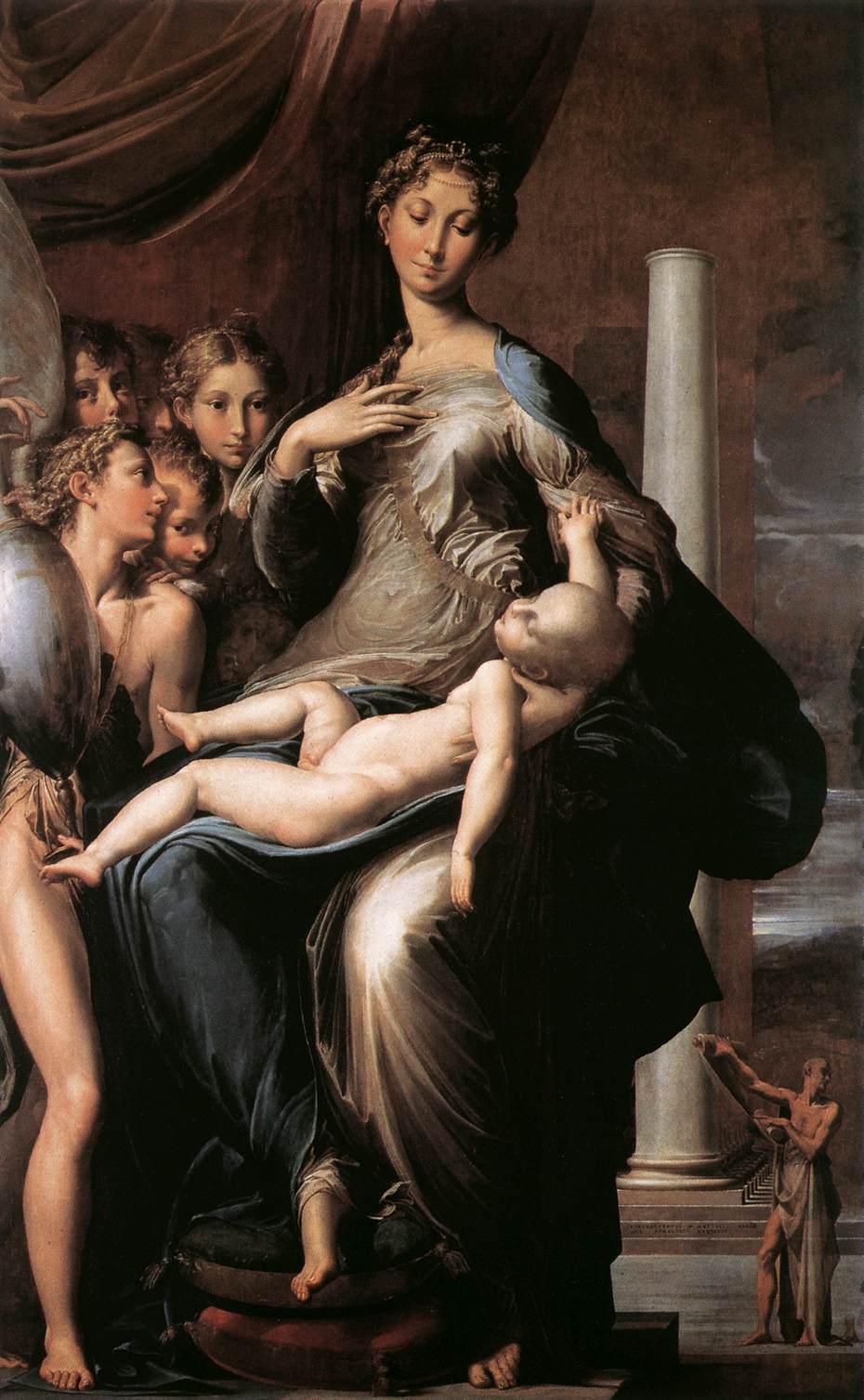By Anne Leader
On 23 December 1534, Elena Baiardi commissioned Parmigianino to paint an altarpiece honoring the Virgin and Child. The painting adorned the funerary chapel of Elena’s husband Francesco Tagliaferri (d. 1529), but it was left unfinished by the artist at his death in 1540. Drawings show that the artist originally conceived his composition in a traditional format with Saints Francis and Jerome flanking the Virgin’s throne. As he worked up his painting, the saints were moved to the background (one was never completed) and replaced by a group of angels. They hold a crystal urn that reflects not the sleeping baby but an image of the cross, also foreshadowed by the baby’s outstretched arms. Known now as The Madonna of the Long Neck, Parmigianino’s painting shows the grace, artifice, and elegance associated with the sixteenth-century stylistic trend known as Mannerism.
References: David Ekserdjian. “Parmigianino.” Grove Art Online. Oxford Art Online. Oxford University Press; Mary Vaccaro. “Dutiful Widows: Female Patronage and Two Marian Altarpieces by Parmigianino,” in Beyond Isabella: Secular Women Patrons of Art in Renaissance Italy, ed. S. E. Reiss, D. G. Wilkins, 2001.



